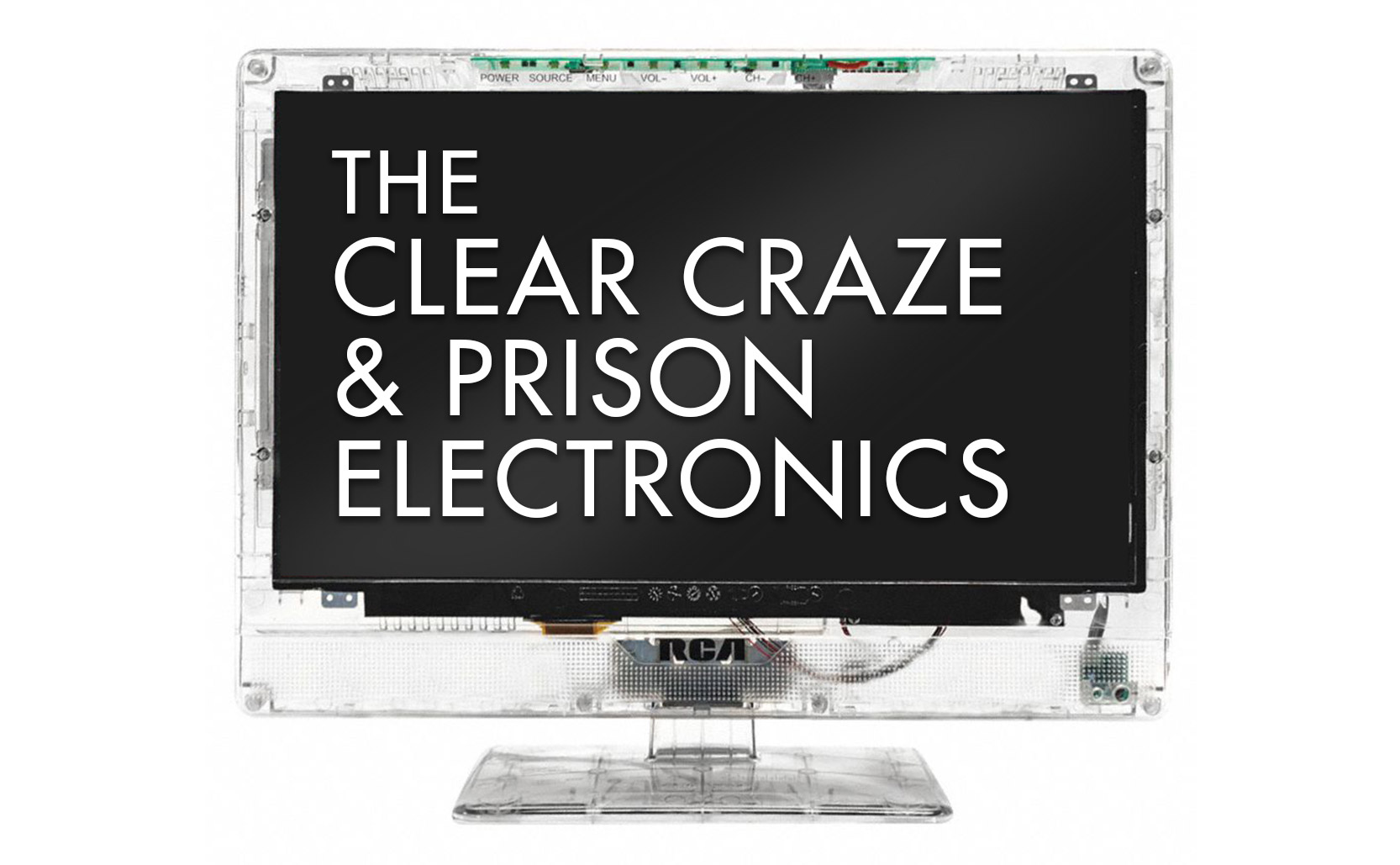the Clear Craze & Prison Electronics
The design fad that had a practical application in prison.
In the late 1980s a trend for clear products took hold – clear electronics, clear drinks. Clear beverages and clear beauty products were pitched as more “pure” than their traditional counterparts because they were free of artificial colors. Health conscious consumers began to associate clear with clean. There is of course no correlation between clarity and health but the trend for clear beverages took off regardless.
Learning from the failure of New Coke, that you don’t mess with your best selling product, various brands created new clear products (leaving their bestsellers untouched) as an attempt to appeal to underserved demographics. In 1992 Pepsi released Crystal Pepsi which was a clear soda without preservatives or caffeine. In response to this Coca-Cola released Tab Clear which was created solely to sabotage Crystal Pepsi. Tab Clear was marketed as a diet soda which they hoped would confuse people into thinking Crystal Pepsi was a diet soda, which it did. Both clear sodas were retired by 1994 (although Crystal Pepsi has come back from time to time in limited releases).
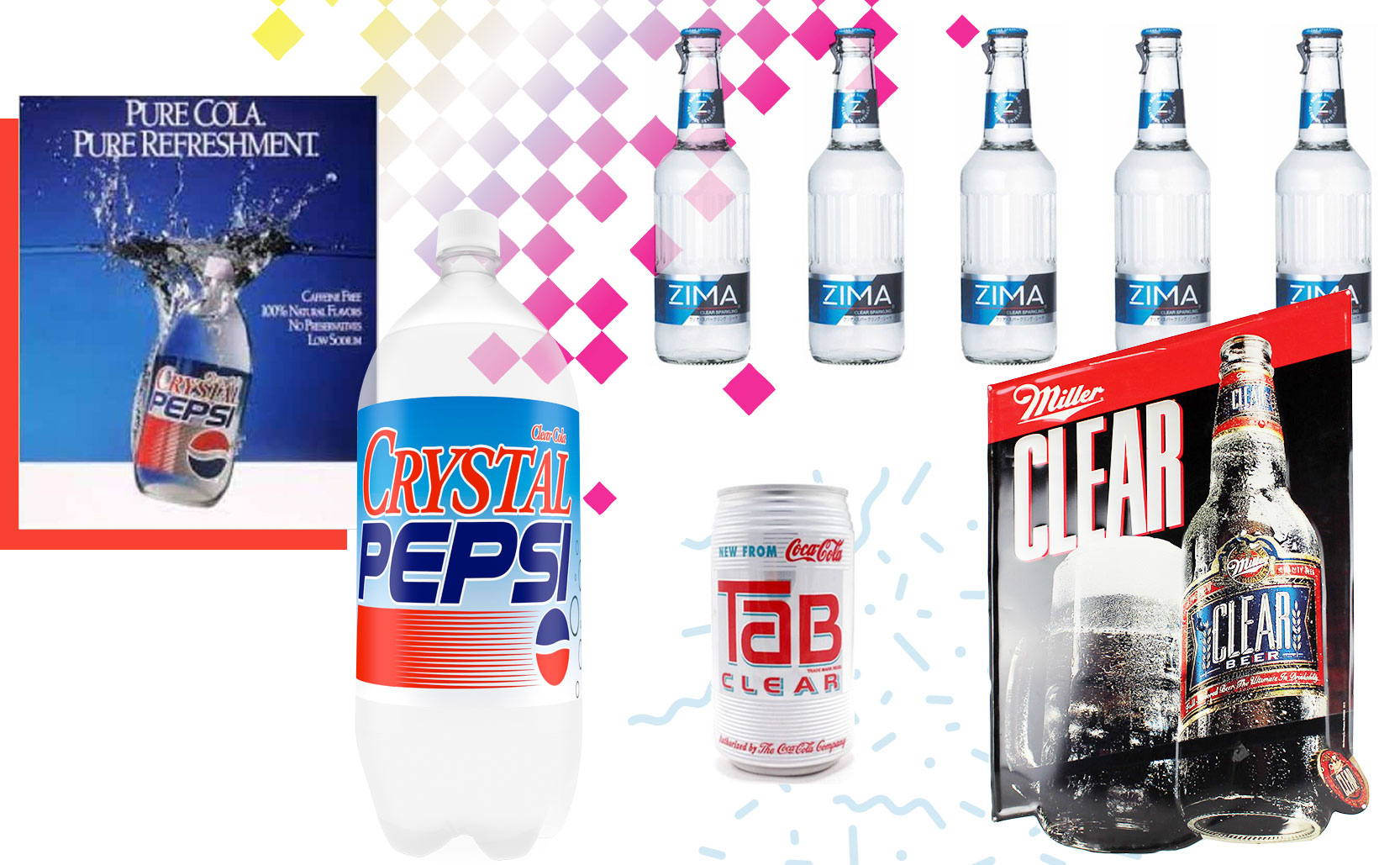
In 1993 Gillette released a series of clear antiperspirants. In the same year Coors Brewing Company released the clear alcoholic beverage Zima. Building off of the 1980s popularity of wine coolers, Zima was a new alternative to beer. It was a lemon-lime drink that was produced for a surprisingly long time (until 2008 in the United States), but was more popular in Japan. Part of Zima’s popularity problem in the US had to do with the fact that it was more popular with women than men which (for some consumers) made it seem like a drink for women. This cut out a large part of the potential male customer base.
In 1993 the Miller Brewing Company chose a few American cities for a limited release of Miller Clear. Through intense filtering they removed the color (and by some critics, the flavor) from a lager to make a clear beer that was less heavy than traditional beer and with greater “drinkability.” It never left the limited release stage.
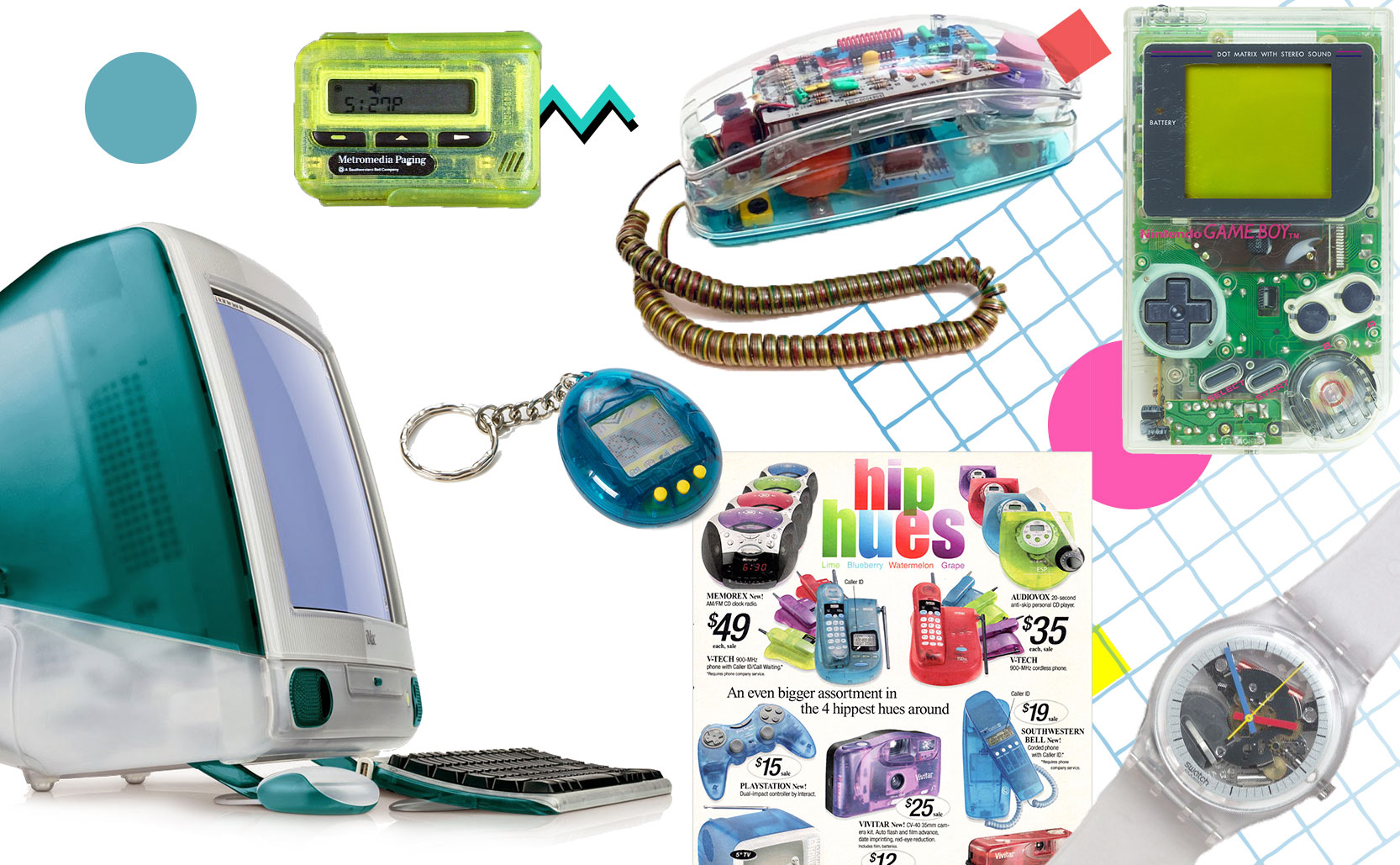
Electronics also became transparent, allowing you to see the internal workings of the device. The trend for transparent/translucent electronics lasted into the late 1990s, much longer than the craze for transparent beverages.
In 1983 Swatch released the celebrated Jelly Fish model of watch which had a transparent body allowing you to see the gears (a version of which you can still buy today). A variety of brands made clear telephones some of which would flash when a call was coming in. As part of the Play It Loud! series, in 1995 you could buy a clear Nintendo Game Boy (the clear model’s color was called “X-Ray”). The first iMac series, which ran from 1998 to 2003, all featured clear / colored translucent bodies. While clear products were a fun novelty that faded out around the late 1990s they are still very much alive in one particular market: prisons.
Clear Prison Electronics
Behind bars transparent goods allow prison security to easily inspect for contraband. Depending on the prison system there are different rules & requirements for goods in prison. Some rules are to aid in the search for contraband (such as clear plastic) while other requirements are to prevent objects from being turned into weapons (such as using silicon instead of hard plastic). Prison music players & TVs frequently have a lower maximum volume so as to not annoy one’s neighbors, forcing the listener to be very close to the speaker. An alternative is that some players have the speakers removed altogether and only provide a headphone jack (to be used with clear headphones).
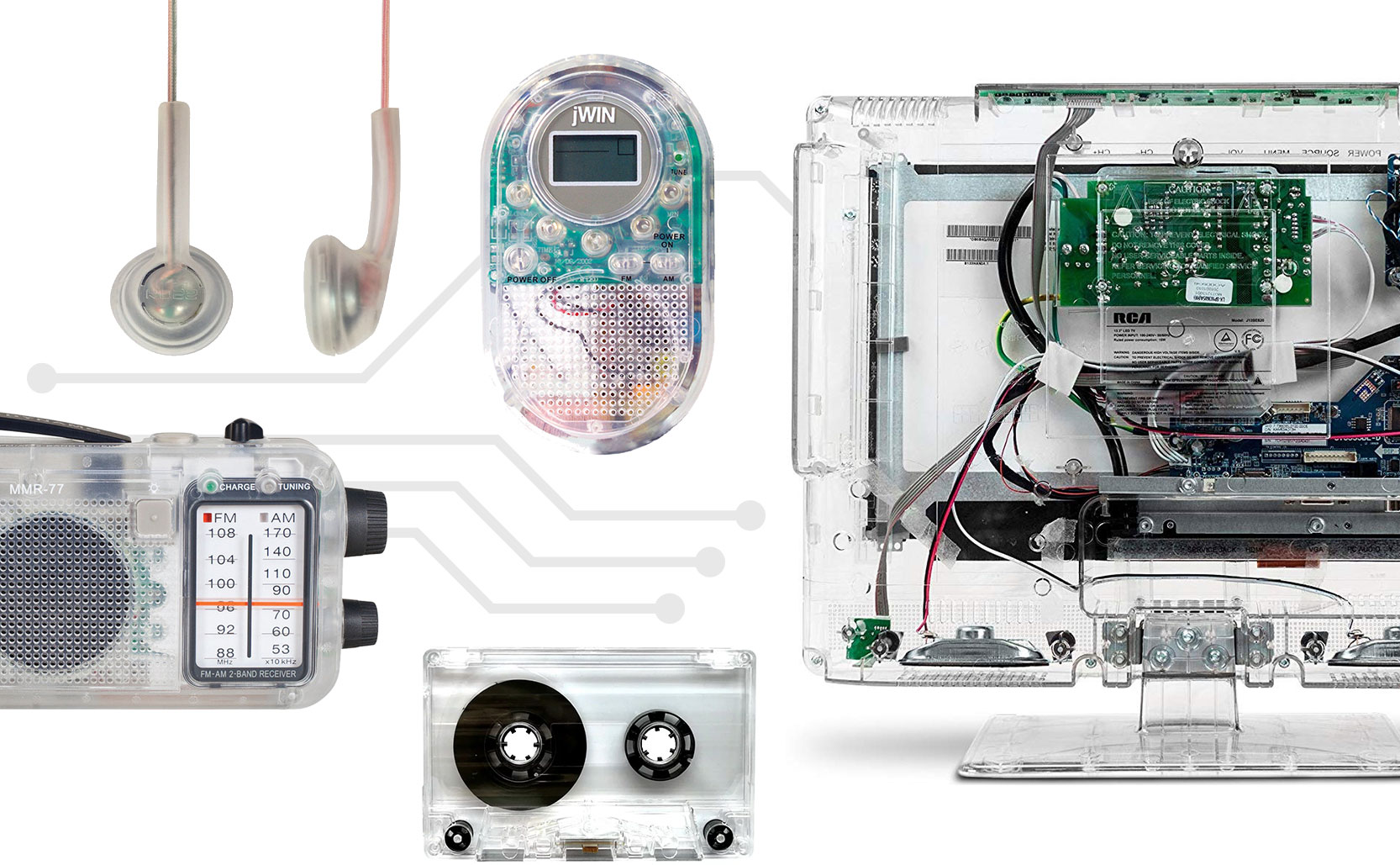
While the cassette was a popular music format in the 1980s, and has seen a resurgence in recent years, it never completely went away. Cassettes have been in steady use in prisons because they’re harder to turn into weapons than CDs and clear cassettes in particular can be quickly inspected for contraband. Thanks to the US’s prison population (the largest and highest per-capita in the world, something America is definitely #1 at) they were able to keep the cassette industry alive long after it fell out of favor with the mainstream public. Even with the introduction of mp3 players into prisons, cassettes are still popular as they are easier to share/trade than digital files.
Bob Barker and Keefe Group are just two examples of companies who specialize in clear products intended for correctional facilities.
Today
You can still find transparent/translucent products today (in and out of prisons). Coca-Cola Clear is a clear version of Coke (but with additional lemon flavoring) introduced to Japan in 2018. You can still find different video game consoles and/or controllers with special clear/translucent editions. Swatch still makes several different clear watches. While clear beer never happened, and Zima hasn’t really come back strong, the hard seltzer craze of 2019 has introduced a plethora of profitable clear alternatives to beer.
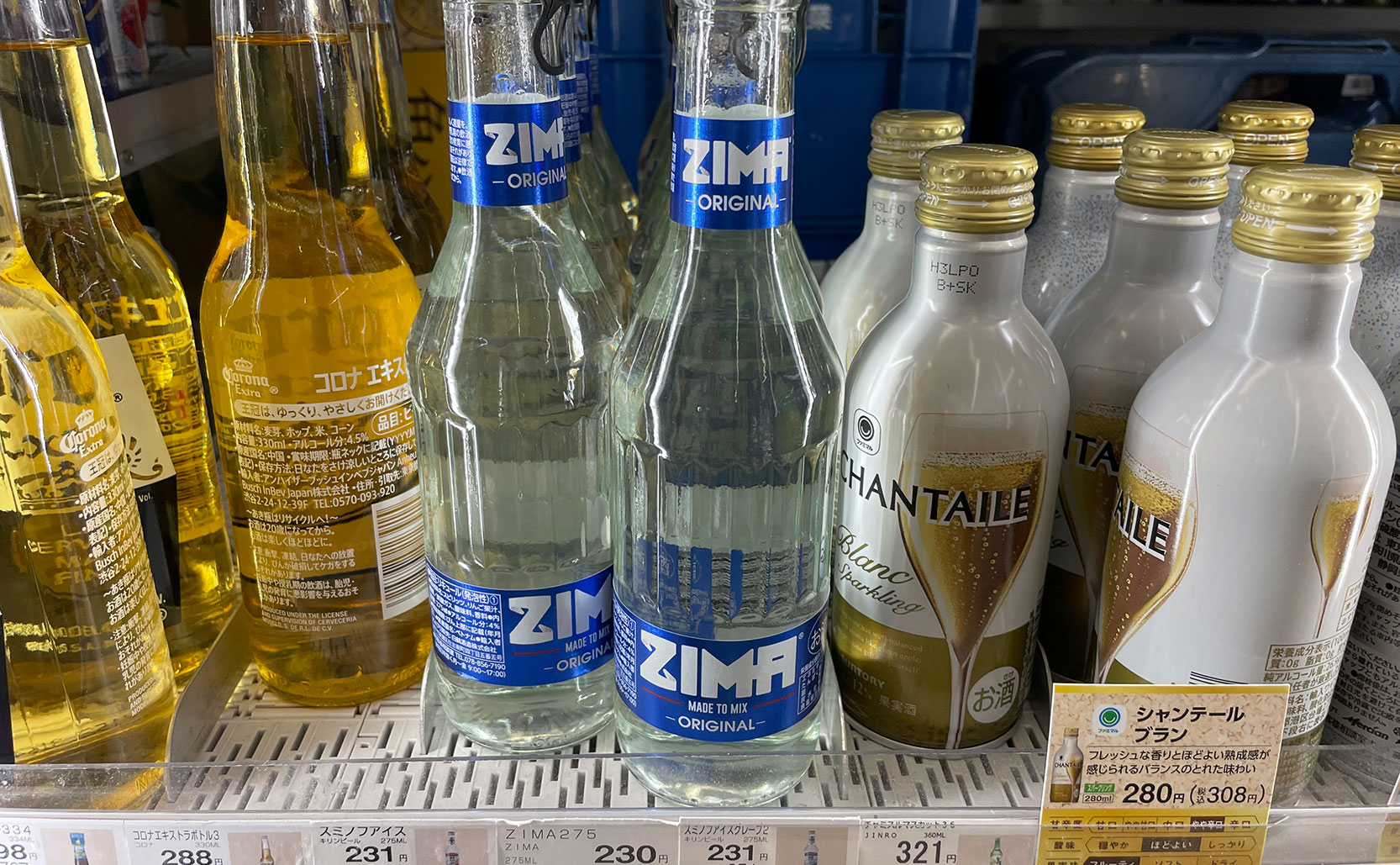
Added info: If you’re interested in owning second-hand clear prison electronics (for the novelty and certainly not for their quality), you can find various options on eBay. Here’s a selection of clear prison televisions. Urban Outfitters has also gotten in the game of selling clear electronics that were originally designed for prison, such as this cassette player.


